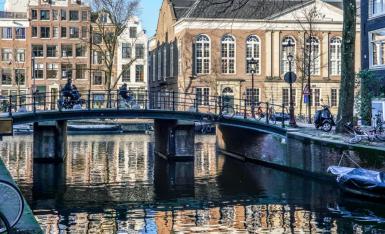Planning, Regulations and Standards
Regional Cycling Networks
Active transportation's role at the regional level is often underappreciated, with railways and roads often assuming importance in investments and decision-making. Handshake is able to demonstrate the value of cycling as a strategic mode of transport at the regional level, connecting villages, towns and cities through a functional network of commuting and leisure routes.
Extending the reach of cycling in cities
Handshake will consider how urban cycling networks can be extended to help support regional cycling networks, and how these can ultimately link together to form a cycling network that is truly nationwide.
Cities using this solution

Leader: Amsterdam
Amsterdam's bicycle network is integrated in the regional and national bicycle network. The regional network is meant for commuting and recreation on longer distances between cities and villages. Cyclists can cycle fast on these cycle highways. The regional network provides an alternative for car drivers on the distances of 15 – 20 km. With e-bikes and speed pedelecs this is a distance which is easy to cycle. The national country wide network consists of separated bicycle paths, progressively extended to a current total length of 35,000 km.
